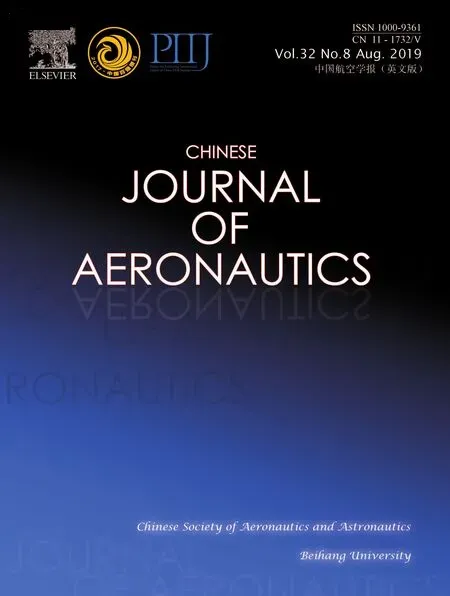Special Column of BWB Civil Aircraft Technology
The Blended-Wing-Body (BWB) configuration may become one of the main configurations for the next generation of wide-body civil aircraft. A research team led by Northwestern Polytechnical University has been devoted to the BWB configuration for more than ten years, and has achieved a series of key technology research results. With the support of related civil aircraft research projects, the team has completed “Research on BWB Design for Large-Scale Civil Airliner” and “Research on Key Technology of BWB Conceptual Design for Wide-Body Civil Airliner”. The key design technologies were systematically studied, including the conceptual design method, aerodynamic configuration, airfoil feature, tradeoff design of high-speed and low-speed performance, composite rudder, high-lift and trimming, and flight control of BWB civil aircraft. And several important progresses have been made in the aspects of airframeengine integrated design, special structure for the central body, and noise reduction. As a result, the 300-seatlevel BWB-300-II concept scheme is accomplished with comprehensive performance reaching or being close to NASA's N+2 generation widebody civil airliner development target.The proposed conceptual scheme was tested and verified in the wind tunnels such as the high-speed FL-3, low-speed FL-51 and pressurized FL-9 of AVIC Aerodynamics Research Institute. The results show that the scheme has good low-speed and highspeed aerodynamic performance and maneuverability. The cruise trimming lift-to-drag ratio of Ma=0.85 is up to 24, which is better than the published technical specifications of similar international conceptual schemes.
This special column aims to report the relevant achievements of previous research work, to promote the academic communication in the field of BWB civil aircraft technology, and further to provide corresponding technical impetus for China’s development of a new generation of subsonic large-scale wide-body civil aircraft, which is “green and efficient, safe and low-noise”.

Guest Editor
Professor Zhang Binqian He has been long engaged in the research of aircraft design aerodynamics and experimental fluid dynamics. He took the lead in establishing the research direction of aircraft aerodynamic configuration in China, and proposed a variety of new-concept aircraft aerodynamic configurations such as W-type and aftbody extended BWB. He took the lead in investigating the aerodynamics problem of largescale transport aircraft's airborne airdrops in China, and presided over the development of a wind tunnel test and numerical calculation research and evaluation platform that successfully filled in the domestic blank, broke the foreign blockade, and reached the international advanced level. He carried out the flow separation control research, and proposed various passive flow control technologies, which were successfully applied in aircraft model projects such as C919 and Shanying. He presided over the successful development of the world's first "Special Test System for Large-scale Aircraft Models Without Support Interference in Low-speed Wind Tunnel" and the first "Lasersupersonic Vortex Flow Measurement System" in China, and proposed "Single-beam Laser-continuous Supersonic Signal Flow Measurement Method". He has published more than 120 papers, 2 monographs and 2 textbooks.
Professor Li Dong He is the New Century Excellent Talent of the Ministry of Education, also the dean of School of Mechanics, Civil Engineering and Architecture, and the director of Aircraft Configuration Design Institute, Northwestern Polytechnical University. His main research areas include aircraft configuration design and boundary layer flow control. He has presided over 3 projects of the National Natural Science Foundation of China and 1 international cooperation project with Airbus, participated in 2 China-EU cooperation projects, and co-presided over 1 national fund key project. He has published more than 50 papers as the first author.

Guest Editor
 CHINESE JOURNAL OF AERONAUTICS2019年8期
CHINESE JOURNAL OF AERONAUTICS2019年8期
- CHINESE JOURNAL OF AERONAUTICS的其它文章
- Assessment on critical technologies for conceptual design of blended-wing-body civil aircraft
- Exploration and implementation of commonality valuation method in commercial aircraft family design
- Effects of stability margin and thrust specific fuel consumption constrains on multi-disciplinary optimization for blended-wing-body design
- Nacelle-airframe integration design method for blended-wing-body transport with podded engines
- On developing data-driven turbulence model for DG solution of RANS
- Numerical investigation on flow and heat transfer characteristics of supercritical RP-3 in inclined pipe
